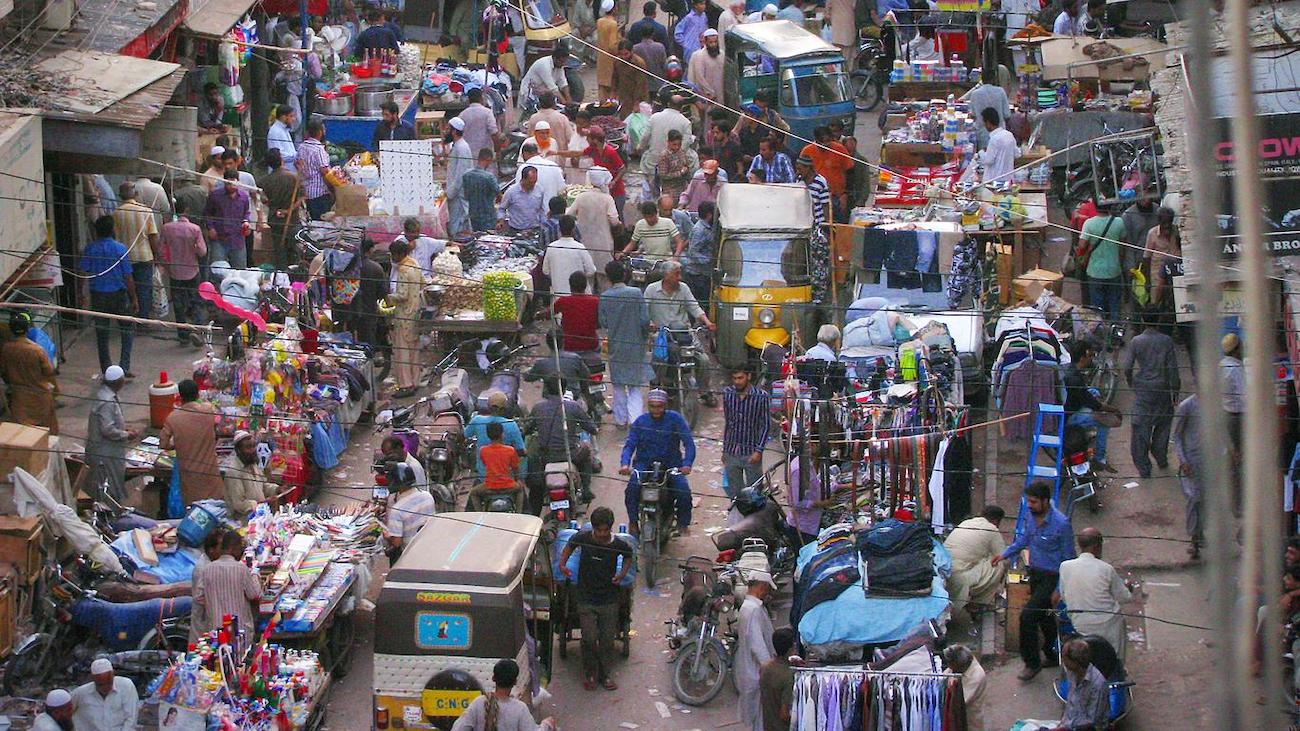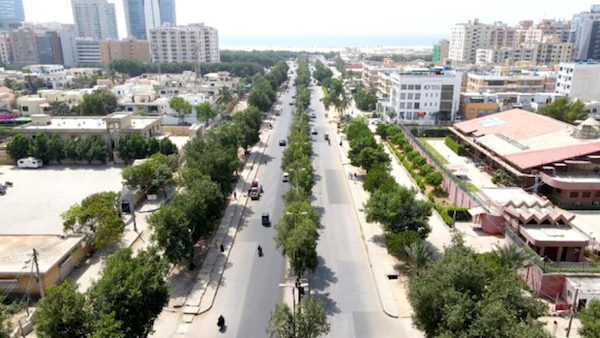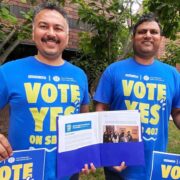Love and Loathing: Being a Mindful Pakistani, I Wonder If Rupture and Ruin are the Destiny of My Beloved Karachi
- It is a small wonder that, through the survival mode and coping strategy, Karachi depicts a city of distinctions and anonymities, a splendid, outrageous creature that enjoys a synergetic relationship with its populaces.

‘Kolachi,’ ‘Kurachee,’ and Karachi’ are the three names that this city has relished. More than the transition in names, the city now symbolizes its evolution from being a fishermen’s village to a colonial mainstay to a commercial metropolis.
When confronted by the theme of ‘Personal Myths,’ the much-quoted Chinese curse, “May you live in interesting times” came to my mind. These are unarguably thought-provoking times, not only for Karachi but also for the world around us. Because it not only surrounds us, but Karachi is a part of us; it is in our bloodline, our DNA, and it is personal. We often hear that as the youth, and as citizens, it is our duty to question the times we live in. Born and raised in Karachi, I survived this city enduringly, especially having reared for a fleeting number of years in the dunes of Dubai. I say survive because one seldom enjoys the privileges of living in this city. The privileges of living in Karachi are a myth.
Karachi bore witness to the carnage of the Partition of the subcontinent. The batwara (partition) symbolized the breaking of families, peoples, communities, and memories and is deeply profound in both states. The resulting modern nation-states of India and Pakistan had Hindus and Sikhs on one side and Muslims on the other, the same communities that had coexisted for almost a millennium across the Indian subcontinent. Despite continuing episodes of turmoil, the city resiliently grows and thrives. The harsh experience gives me immense insight into all that has gone as planned and all that derailed due to the very fact that it became the burgeoning resource for an unchecked, ever-growing population in a country that was already riddled with its fair share of challenges.
The outbursts, protests, and disturbances when confronted with a breakdown, whether civil, structural, social, or political, are a prominent, dominant force in the way of life. The disorders and dysfunctions spark off the toughest of arguments against it, for it directly determines the health and well-being of each Karachi citizen belonging to the industrial, educational, residential, or commercial hub. The complexities of Karachi render me a right to state my perspective on a soft, literary platform.
Karachi was the first capital of Pakistan and continued to be so till 1967. Being a major seaport and primary industrial hub, the financial capital attracted the largest number of refugees in 1947. Since then, the migratory identities may have altered but the burden on the city hasn’t. It hosts an escalating number of employment and opportunity seekers from across the country while providing sea and road links to the entire region. With the massive migration, a city that capsulated coconut oil in its lamps and was washed daily for cleanliness and hygiene, went into growth throes with few blueprints, resulting in the haphazard, unchecked planning and development that often-covered sewerage and water channels, clogging, encroaching, desperately pushing its way forward like the crooked house on a giant’s back. Once well-planned areas are now surrounded by doom and gloom to accommodate the escalating population and commercial interests. As they say, whatever could go wrong — did.
The Cacophony
Karachi sprawled into suburbs to the extent that the suburbs became the city itself. The impediments of its planning become all the more apparent during the rain spells as deep, stagnating water covered the main arteries, holding traffic and creating delays. Meanwhile, public transport on the other hand deteriorated to become the adopted mode of travel for the greater population, pushing the genteel towards taxis, rickshaws, and eventually private cars. The cacophony of the engine and loud horns became the sirens of the city.
With ever-expanding borders and insufficient budgets dedicated to expansion, there was a massive web-like labyrinth, replacing what used to be the road network. This extensive, disruptive megacity became the shifting sands for many. The lack of awareness, economic struggles, crime, illiteracy, illegal connections, theft, and sheer ignorance wheeled a cycle of challenges for Karachiites on a daily basis.

Moral deterioration and ethical corrosion contribute to the further descent of the city of lights that was ironically once famous for its arts, architecture, history, culture, preservation, conservation, literature, and social curation.
Karachi is Pakistan’s sustenance. Karachi is Pakistan’s lifeline. Keeping the industrial zone going at full throttle, against all shortfalls, is a massive undertaking. The city cannot afford to compromise – on anything. Forever and a day, the people of Karachi have always had to cope and survive. Due to negligence, they have to brave a failure, a collapse, or a rupture, whether civil, social, cultural, structural or political. So, we are more accustomed to firefighting in the absence of precautionary measures. Without fail, we struggle: to be punctual to school or the workplace, to navigate in the wrong lanes, to drive in the face of blinding beamers by oncoming vehicles, attempting to save a couple of minutes to avoid traffic and high life stress. We go through many or all every single day, as we turn a blind eye to the repercussions of our actions. Perhaps, we tend to conveniently extricate ourselves from how it affects others.
A lot of these instances are an unfiltered way of how we try to disconnect ourselves from the massive issues at hand. Every year, we put up with the inconvenience and damage the summers bring, the winters bring, and the monsoons bring. Without any groundwork. Impromptu. Extempore. Off the cuff. Holding out hope, we survive. Against all odds, when the entire city comes to an absolute halt, we survive. Drenched in knee-deep water, we survive. Sitting in pitch darkness, we survive. Despite the total structural collapse, we survive. Each day, we cope. Each day, we survive. That’s the spirit of Karachi and its people. Come rain or shine, survive we must.
Being a mindful Pakistani civilian, I wonder if rupture and ruin are the destiny of my beloved Karachi. As I write this piece, the heavy downpour outside will lead to another bout of indefinite blackout. Will survival mode remain Karachi’s autopilot mode? I wonder. I wonder what evolution feels like. What is progress? Can people thrive despite all the misgivings? What does it mean to grow? Does the blossoming phenomenon exist?
Money Speaks
Maybe it does – for some. Money speaks. You face crime issues, build strong forts. You feel afraid, hire security guards. You can’t drive, salary a driver. You have road rage, rent a car. You face electricity failure, buy a generator. There are water crises, call a tanker. You aspire to quality education, send kids abroad. So, again. We cope. We don’t address the issue. We rescue. We attempt to escape. The financial capital of Pakistan was swamped with filth and misfortune, anxiety and angst in the torrential monsoon rains because while everyone assumes that money speaks, it doesn’t, in the face of a disaster, when one is brought crashing down to the Earth, until you, quite literally, have to be rescued in Noah’s ark – boats and dinghies that have become a merry sight to watch, cruising through the smooth, seamless roads of elite Karachi.
The forts, the walls may be standing tall, but pointless, nonetheless. The four cars belonging to a single household are a hassle to park. The generators cannot be refueled. The tankers refuse to arrive. What is wealth in the face of devastation, if it fails to find solace, comfort, and peace in life? Is that the undaunted destiny of my treasured Karachiites? Do we deserve this paralysis of the entire country, with day-to-day activities coming to an utter cessation in the face of failure?
The measure of these issues varies from the neighborhood level to a large-scale disaster in the very fabric of the state, resulting in inundations in social, cultural, educational, political and economic abyss. They have gradually become a consistent phenomenon in most of the fast-developing cities, especially Karachi.
Moral deterioration and ethical corrosion contribute to the further descent of the city of lights that was ironically once famous for its arts, architecture, history, culture, preservation, conservation, literature, and social curation. It seems as though crumbled edifices were the fate of Karachi, replacing what used to be anything but a muddle of rupture and ruin. The let-down that many feel after every massacre, every targeted killing, every ethnic clash, after sectarian riots, blasts on the Ashura processions, massacres of Hazara communities, burning alive of Christian families, burying alive of girls in the name of honor, murders of young couples who elope to find security in this city, leads many to question the curators and watchdogs of culture. So, it is a small wonder that, through the survival mode and coping strategy, Karachi depicts a city of distinctions and anonymities, an assortment, an eccentric spirit, a splendid, outrageous creature that enjoys a synergetic relationship with its populaces.
The political, almost theatrical, fiasco, snowballed a crippling chain reaction. With most of the masses comprising teens and the youth, Karachi strived to spark potential for creative solutions and help young people, who have grown up in a fractured city, to narrow rifts and rally for change. The city that was carelessly dismissed as ‘the financial capital of Pakistan’ or ‘mainstream business hub’ suffered devastation on one hand and enjoyed an invigorating art and culture explosion on the other, which was a baby step towards connecting with the citizens from a spectrum of neighborhoods and communities, in a land where the followers of over six religions live in close proximity.
As a writer, it has been important for me to acquaint myself with a robust discourse and dialogue in the field of cultural and literary knowledge, where an open exchange on contemporary concerns about Karachi and its woes can persist and evolve, and where voices from disparate backgrounds and ages can converge, sometimes even amalgamate. The journey is neither easy nor short. It will take its time, but an organized and aware community may be the best asset for expediency. The interface created by various publishing houses springing up in the recent past kindled the beginning of a new relationship between culture and the public audience, as a quantum of books, fiction and nonfiction, and performative works entered our cultural imagination.
Drenched, the city of lights needs its people. More than ever before. The hope is to create and raise awareness that Karachi belongs to all people and not just the elite, who, like me, call this maddening, inspiring city home. Coming from the perspective of a writer, I am wary of the tremendous power and responsibility that the tag bestows. As a witness to the trauma of violence, and the challenges presented by urban decay, the beleaguered intellectual space, barriers, migration, change, territory, gender and sexuality, capitalism, and global commerce, legacies of colonialism and class divides, we must have an internal dialogue with ourselves and the city, to ponder not only our times but also the narratives tied to them. Because Karachi does not constitute a uniform ensemble or an inert backdrop. Rather, it offers a dynamic, polymorphous entity in a constant state of change. This enables each of us to exploit the city’s diversity, utilize its remarkable potential, and lose ourselves in the tangle of its neighborhoods.
Sara Danial is a mother of two. A Pakistani writer/editor, born, raised and survived in Karachi, though to be precise, reared in the dunes of Dubai, she was corrupted by English and a voracious appetite for books. She’s certain to die in the present century as she was born in the last. Stained by a number of vices, like reading and writing and with a Master’s degree, she thought the world should be at her feet, but she was wrong. She took up her old vice to land up in the world of literature, through which she shares her love for all things sacred to the English language. Her writing has been published in Dawn, The News on Sunday, The Friday Times, Pakistan and Gulf Economist, South Asia, BOL, The Friday Times, The Nation and The Express Tribune. She can usually be found musing about over a cup of coffee, or occasionally ranting. You may vent out at sara.amj@hotmail.co.uk.



I feel sorry for the city and itspeople. It is the responsibility of the local as well as the central governments to keep the city functional and alive…livable. When there is so much of struggle to survive, the city becomes meaningless.